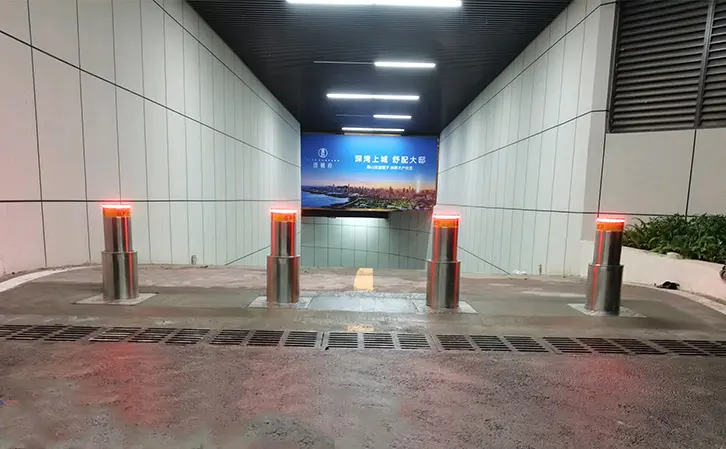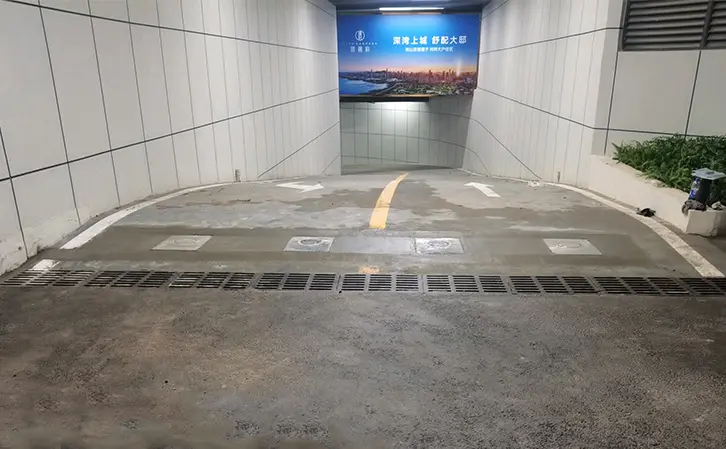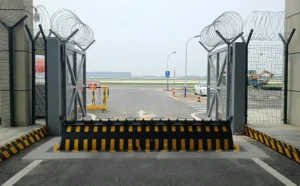School Automatic Bollard Usage Guide
In schools, automatic bollards are primarily used to control vehicle access at the entrance, ensuring the safety and orderly flow of traffic on campus. This guide provides a detailed overview of the school automatic bollard usage, helping you understand its operation, how to avoid accidents, and key maintenance tips to ensure the safety of students and staff, as well as proper traffic management within the school.
1. Preparation Before Use
Check the power and control system
: Ensure that the bollard’s power and control systems are functioning properly, especially during peak hours and school events.Understand campus regulations
: Familiarize yourself with the school’s vehicle entry and parking management policies to ensure compliance with campus safety regulations.Maintain a safe distance
: When parking your vehicle, make sure to maintain a safe distance from the bollard to avoid accidental collisions.
2. How to Raise and Lower the Automatic Bollard
1. Raising the Bollard:
Remote control operation
: When the school needs to restrict vehicle access, use the remote control and press the raise button to activate the bollard. The bollard will begin to rise, preventing vehicles from entering.
Confirmation of operation
: As the bollard rises, the indicator light will illuminate and a sound will play to notify the driver that the bollard is rising.
Full elevation confirmation
: Once the bollard is fully raised, the indicator light will remain on, signaling that the bollard is in the raised position and vehicles are prohibited from entering to ensure no unauthorized access to the campus.
2. Lowering the Automatic Bollards:
Remote control operation
: When vehicle access is allowed, press the lower button on the remote control to lower the bollard, allowing vehicles to pass through.
Safety confirmation
: Ensure that vehicles have fully passed through the bollard area before lowering the bollard to prevent accidental damage.
Automatic reset
: Once the bollard is fully lowered, the indicator light will turn off, indicating that vehicles can safely pass through.
Notes:
- School administrators should be proficient in using the remote control to ensure vehicles can safely and efficiently enter or exit the campus as needed.
- Regularly check the remote control batteries to ensure that the bollard can be operated normally, especially in emergencies.
3. How to Avoid Vehicle Collisions
How to Avoid Vehicle Collisions
In schools, especially during drop-off and pick-up times when pedestrian traffic is high, extra caution should be taken when operating the automatic bollard to ensure the safety of students, staff, and vehicles. Please take note of the following:
1.Follow school traffic regulations
: Strictly adhere to traffic signs and instructions on campus to ensure safe driving within the school grounds.
2.Correct operation of the automatic bollards
: Operate the bollard according to the proper procedures to avoid accidental vehicle damage.
3.Be cautious in crowded areas
: During busy school hours, avoid frequently operating the bollard to prevent pedestrians from accidentally entering the bollard area.
4. Maintenance and Care
To ensure the long-term, efficient operation of the school’s automatic bollard, regular maintenance is essential. Key maintenance points include:
1. Regular system checks
: Perform routine checks of the bollard’s power, mechanical components, and control systems to ensure they function properly, particularly during peak school hours or special events.2. Keep the surface clean
: Regularly clean the surface of the bollard, especially after rain, to prevent dirt and debris from affecting its operation.3. Lubrication and maintenance
: Apply lubricant to the critical mechanical parts of the bollard to ensure smooth raising and lowering operations.4. Replace aging or damaged parts
: If any parts of the bollard are damaged or showing signs of wear, contact maintenance personnel promptly to prevent any disruptions in use.
5. Conclusion
Mastering the correct use of school automatic bollards not only helps to maintain safe and efficient vehicle management on campus but also helps prevent potential safety hazards. Through regular maintenance and care, the lifespan of the bollards can be extended, ensuring smarter and more regulated traffic control within the school.










